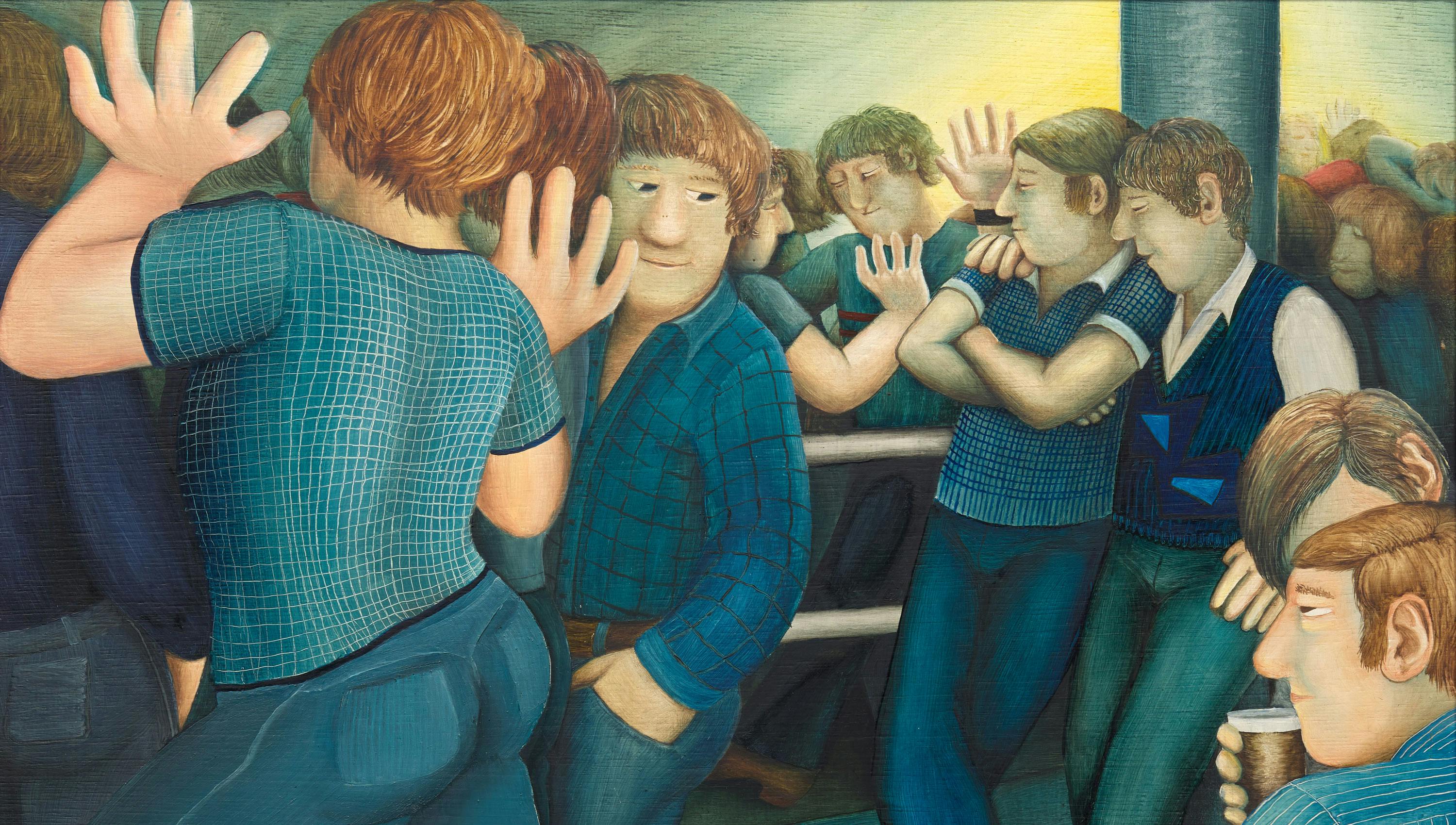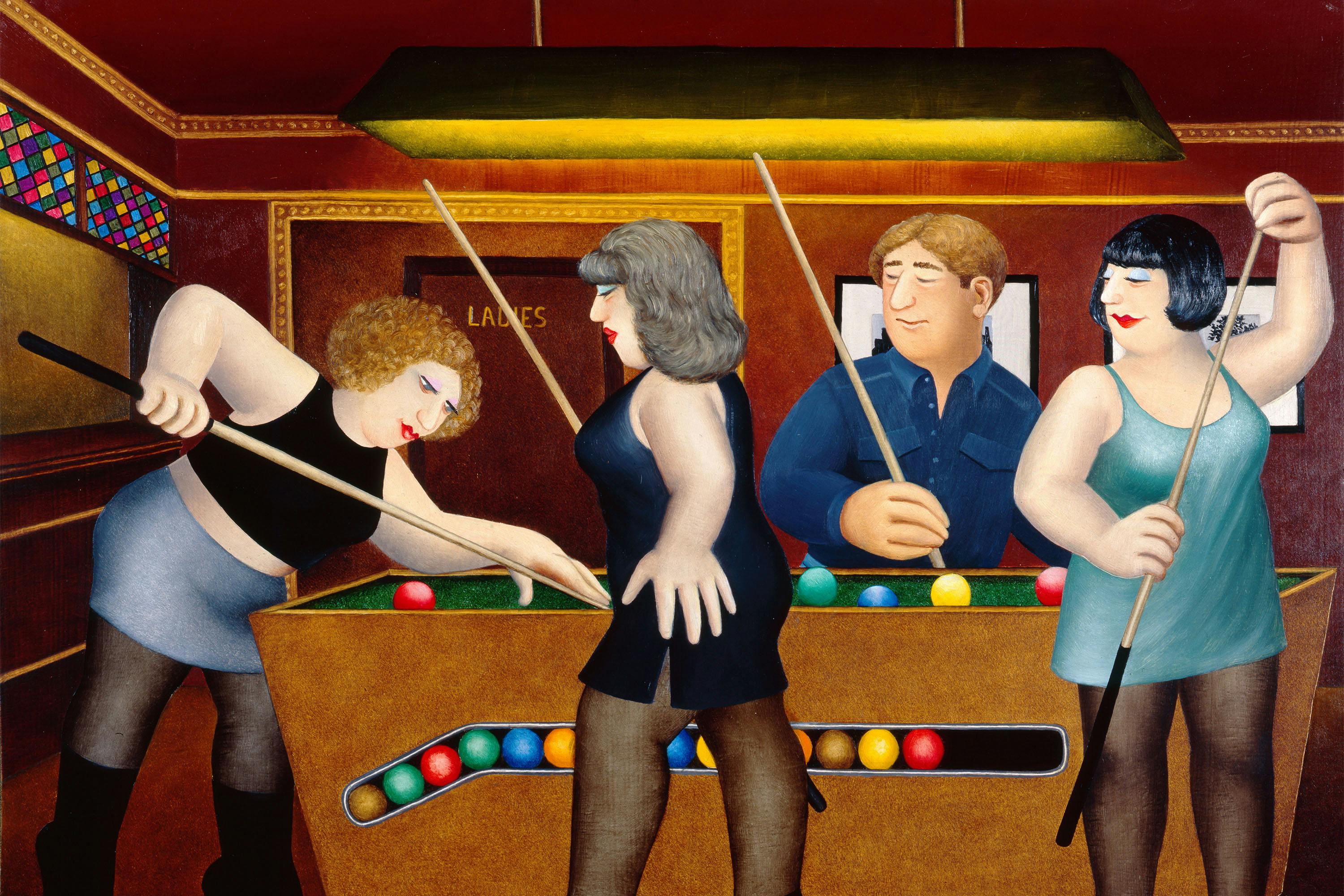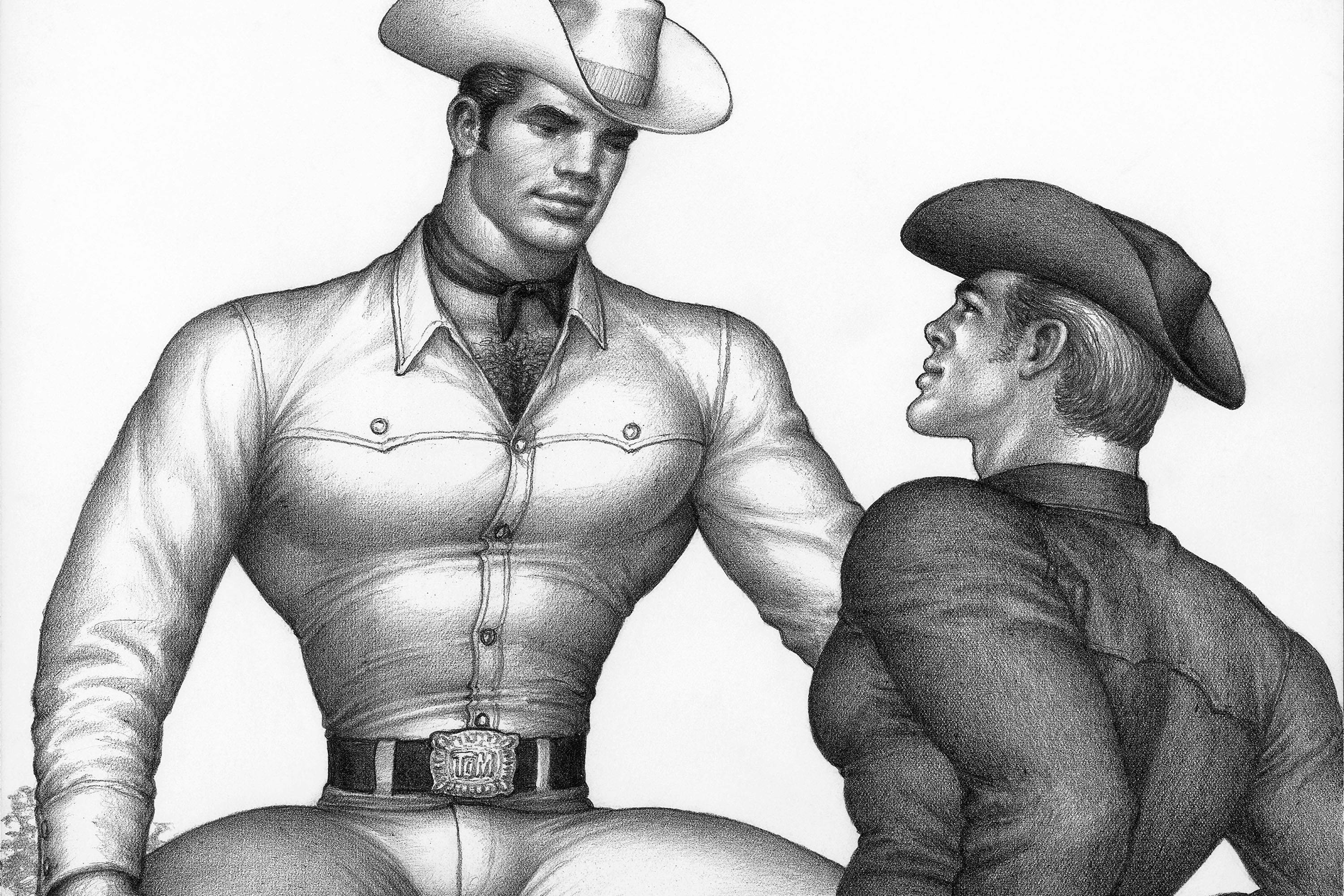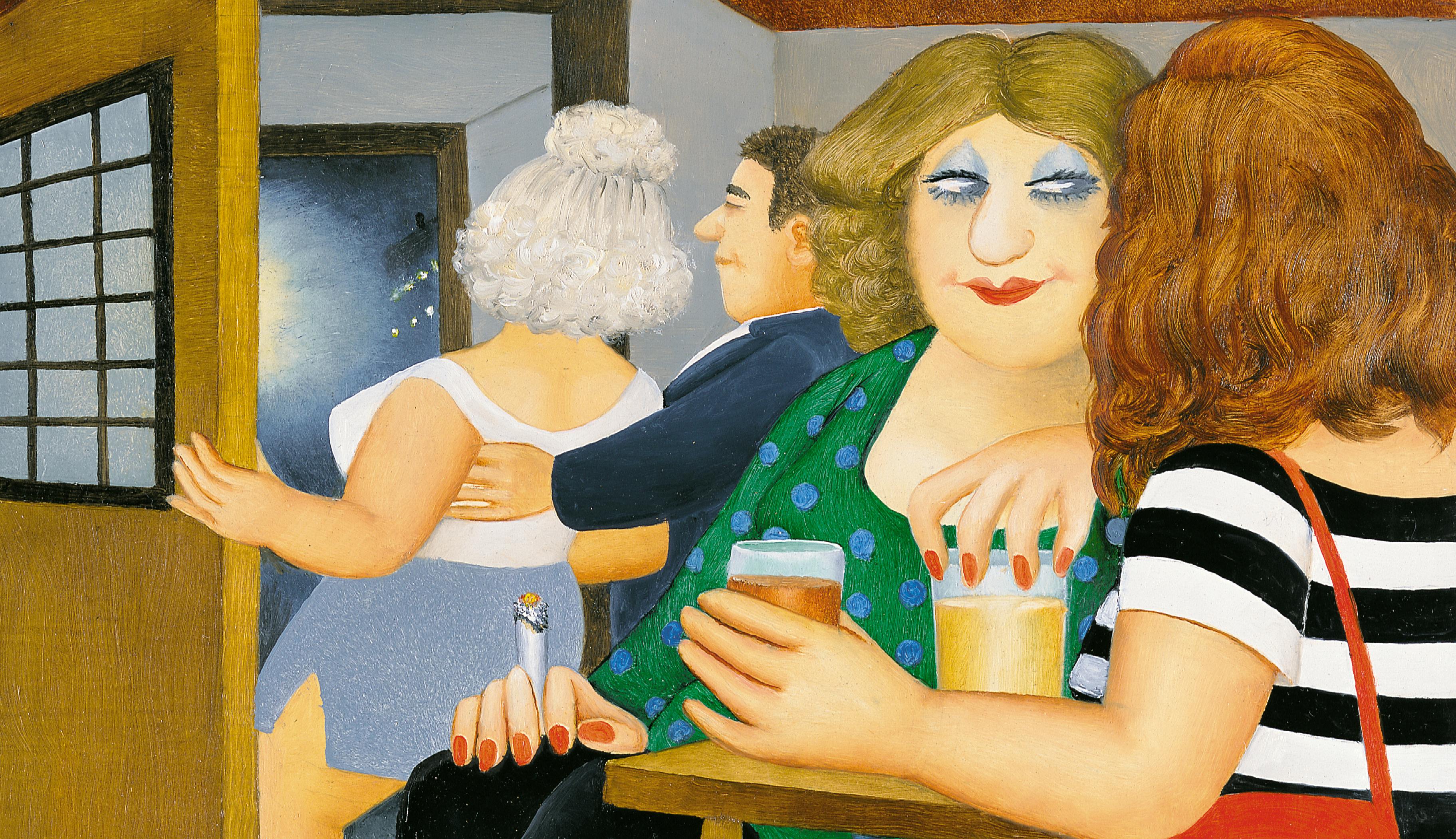Beryl Cook / Tom of Finland brought together the work of these two cultural icons for the very first time.
At Studio Voltaire, fleshly excesses were explored in pairings that underscored their works as playful and political. In pairing their work, including archival materials which had never been seen by the public, this two-person presentation provided a significant refocus and reveal interconnected ideas surrounding gender, sexuality, taste and class.
Beryl Cook (b. 1926–d. 2008) was a painter renowned for her exuberant style and descriptions of everyday life. Her work captures the social milieu of the areas she lived in and visited, notably Plymouth. Her most enduring images are of larger-than-life women carousing in nightclubs, eating in cafés or enjoying ribald hen parties, rendered in graphic and colourful forms. Her work came to prominence in the mid-1970s and she quickly became known as one of Britain's best-loved artists, highly recognised for her distinctive works, which are both celebratory and provocative.
Tom of Finland’s (b. 1920–d. 1991) pioneering depictions of homosexual machismo in his images of bikers, soldiers, cowboys, sailors and labourers broadly represent queer, leather and muscle communities. A master draughtsman, his works gave form to an imaginative universe that, in turn, helped fuel real-world liberation movements and had significant influence on a wide range of cultural figures including the Village People, Freddie Mercury, Jean Paul Gaultier and Robert Mapplethorpe.
Both artists have a distinct and coherent way of hyperrealising the body in images that fundamentally celebrate pleasure and deny shame. The exhibition further considered the means of dissemination employed by the artists during their careers: Cook's practice was widely reproduced in postcards, calendars and prints that brought her work into the homes of thousands of admirers, and Tom of Finland first published his work via proto-porn “fitness” magazines and a covert network of friends and followers. Often working outside of gallery and museum systems, they directly engaged with their audiences, gaining dedicated and enduring followings and subsequently impacting a wider popular culture.
The exhibition was made in partnership with The Tom of Finland Foundation and the family of Beryl Cook.


















